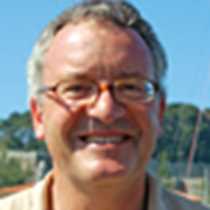Copenhagen, Denmark
The Chinese have a saying that a crisis is a challenge combined with an opportunity. The need to stay in port for an extra day while engineering work was carried out on the second engine’s gearbox thus turned into an unexpected opportunity to explore a stylish city many of us had seen only fleetingly, the Expedition Leader and his able assistant rising to the challenge of arranging the day’s logistics.
Soon after breakfast, on a fine if cool day, we boarded boats for a tour of the city’s extensive canal system which began with an exclusive tour of the city’s new opera house. The opera house has a magnificent location on the island of Holmen facing directly onto the royal summer palace at Amalienborg. Hereby, hangs a tale for it is both notable and puzzling to an American audience to hear guides express misgivings about a new opera house, one of the most expensive ever built, that has been built for the city under the patronage of a wealthy citizen, Mr. A. P. Møller, the Maersk shipping magnate.
Designed by Henning Larsen, its squat exterior has divided opinion in the city but its excellent acoustic has drawn unanimous praise from the audience. Stunning foyer lamps, designed by Icelandic craftsman, Olafur Eliasson are a notable feature.
For this is Scandinavia, home of high taxes (up to 51% income tax in Denmark) and an all-embracing welfare state. It is also the place in Europe, according to successive opinion polls, where the population is most content. The emphasis here is on quality of life rather than personal wealth, the embedding of the citizen in community rather than personal autonomy.
Public transport is excellent, education is of high quality and free for all, and Copenhagen, uniquely, has free bicycles which can be picked up at various locations and deposited at others in the interest of easing traffic congestion. Crime is low, and bikes are ‘exchanged’ rather than stolen!
As our canal boat guide hastened to assure us, this is emphatically not socialism, certainly not communism (the communist party get fewer votes here than in many other European countries.) What we have is an old communitarian tradition that may stretch back as far as Viking times, the tradition of social equality and mutual responsibility summed up in the almost untranslatable phrase: ‘Lagom is best!’ (Lagom, a word which may originate with the shared Viking drinking horn and which implies that no-one should put their head too much above the parapet). And that is precisely what Mr. Møller is perceived to have done.
There was more on the Viking heritage in the afternoon in our visit to the National Historic Museum, with its astonishing collections of Bronze Age artifacts, not to mention Iron Age bog bodies. As an introduction to European prehistory, this exhibition can scarcely be bettered and appropriately so as this was where the curator, Mr. Thomsen, back in the nineteenth century, first organized his collection according to the principle of an ascending order of technology: stone, bronze and iron. The resultant “Three Age System,” as it became known, has provided the paradigm for European prehistory ever since. Another option was to visit the Glyptotek art gallery, with its magnificent post-Impressionist collection.




